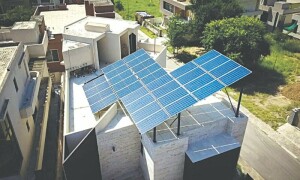NEW YORK: Once more unto the breach, dear friends, once more.
Having slogged through several years of research on the many and complex causes of the financial crisis, I take it personally when people try to rewrite history and ignore what actually drove the events that led to the collapse.
That is our charge today, in response to the rather perplexing claim that the Federal Reserve caused the crisis — not because former Fed Chairman Alan Greenspan irresponsibly kept rates low for too long, but rather because the Fed raised them.
This is the proposition offered in a New York Times op-ed by David Beckworth of the Mercatus Center and Ramesh Ponnuru of the American Enterprise Institute and a Bloomberg View columnist.
Before we delve into details, a preface: We have spent a good deal of time explaining how and why complex things are easy to misunderstand. There is rarely if ever a single factor that drives complex systems such as the economy or markets; the real world isn’t that neat and simple. As philosopher David Hume once explained, causation is a much more nuanced thing; correlation can be confusing. There also is the issue of some folks who feel compelled to misrepresent what caused the crisis, as it helps rationalize their own cognitive dissonance.
We and others have discussed this in the context of the movie “The Big Short.” That is the leaping-off point for the Beckworth and Ponnuru article.
To make the claim, as the authors do, that “the bursting of the housing bubble was the primary cause of a financial crisis” is to confuse cause and effect, to ignore a wealth of other well-documented factors, and to marry a straw-man argument with an oversimplified explanation for what happened.
Both the collapse of Lehman Brothers and the bursting of the housing bubble were the result of many factors in a complex chain — the result of the crisis, not its main cause.
Instead, Beckworth and Ponnuru say that “the Federal Reserve caused the crisis by tightening monetary policy in 2008” and that the “housing bust started in early 2006, more than two years before the economic crisis.”
Both assertions are incorrect, for the seeds of the bust were planted long before. What’s more, the Fed didn’t tighten in 2008; it cut rates seven times.
Housing operates on a lag, and up cycles end with volume declining first, followed by prices a year or so later. Volume peaked in 2005, but prices kept rising, peaking in 2006. It’s as if no one told the housing zombie it was dead, and its own momentum — and buyer psychology — kept on chugging. Volume topped in 2005, followed by prices in 2006, at which time the whole sector started declining.
But if you want to track where the housing bust began, you need to look at the relationship of home prices to other important metrics. My favourite is median home price to income, as it tells you what buyers can actually afford. We can also look at costs of rent versus costs of ownership, or the market value of all of the homes in the country relative to GDP.
All these metrics tell us exactly how realistic prices are, meaning can the buyers actually afford them.
The ratio of home prices to income began to tick up in the early 2000s. By 2002, it was approaching its 1980s highs. It was a standard deviation away from the norm by 2004, and it reached at 2 1/12 times the norm in 2005. Housing, as a few of us observed long before the financial crisis bloomed, was a debacle about to happen.
The housing boom drove employment in construction, mortgage brokerage, home furnishings and durable goods. We even had a bull market in real-estate agents. People pulled cash out of their homes at furious rates to fund renovations at first, then big-screen televisions, automobiles and vacations.
By arrangement with The Washington Post
Published in Dawn, January 31st, 2016















































